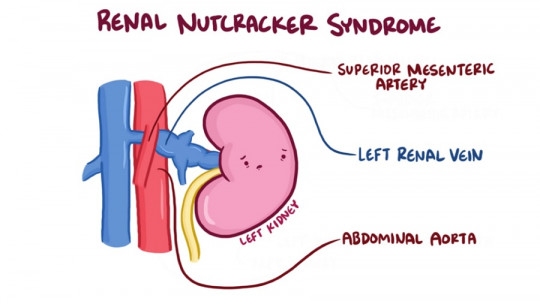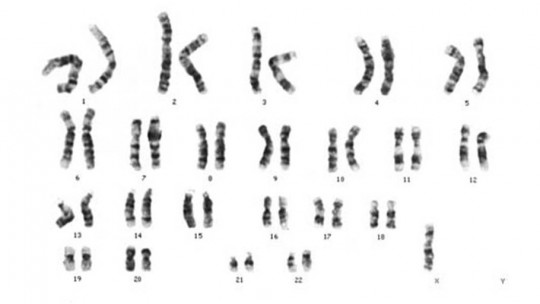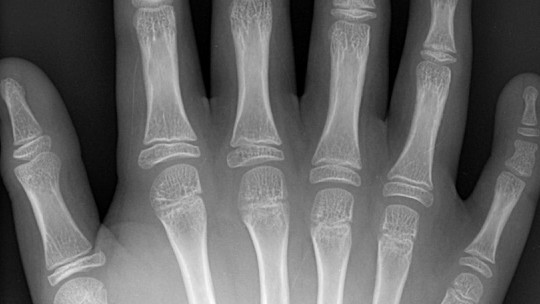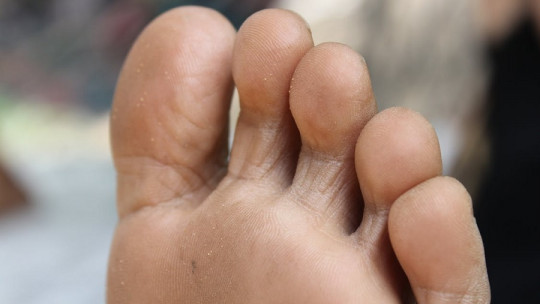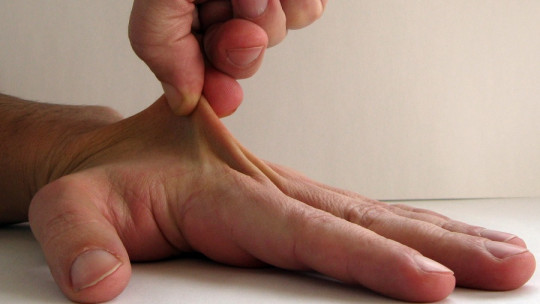
Possibly on some occasion we have seen how someone could stretch their skin to unusual limits, or how some people are able to twist different parts of their body that escape most people due to their hypermobility.
In most of these cases we see it as a curiosity, and the truth is that around 10% of the population has this characteristic without having any major problems.
However, there is a much more severe problem that sometimes shares some characteristics with hypermobile people, except that in their case it appears along with other symptoms that impair their quality of life and that can even be dangerous for their survival. This is Ehlers-Danlos syndrome a strange and unusual genetic disease that we are going to talk about throughout this article.
What is Ehlers-Danlos syndrome?
The name Ehlers-Danlos syndrome is a strange and unusual syndrome, of genetic origin, which is characterized by the presence of connective tissue alterations and specifically due to deficits in collagen production These deficits, which occur at a generalized level throughout the body, result in damage to the skin, joints, blood vessels or even organs. It is a disease mainly observed in humans, although some cases have also been seen in other animals.
Although there is great heterogeneity, among the main and most noticeable symptoms of this disorder we can find the presence of hypermobility in joints and ligaments, hyperelasticity of the skin and ecchymosis (injuries in which hemorrhages appear within the skin, such as those that occur with a blow), as well as muscle weakness and fragility in tissues: it is not uncommon for bruises to appear at the slightest blow, joint pain or ease for dislocations and dislocations to appear.
In some cases it can be linked to arthritis, respiratory and vision problems In severe cases, it can cause rupture of internal organs, heart problems or deformities, as well as chronic pain or mollusk tumors.
Ehlers-Danlos syndrome is a very rare disease, which only 1 in 5,000 people suffer from and which seems to occur in a higher proportion in women and children. It is common for this problem to arise comorbidly with other problems such as chronic fatigue, tendinitis, hearing loss, fibromyalgia or scoliosis. In some cases it is confused with celiac disease or even abuse. As the subjects grow, hypermobility tends to decrease, but the pain and complications derived from it remain
It is a syndrome whose variety can vary, ranging from a mild problem to, and especially in some subtypes, potentially having fatal repercussions. This is especially relevant in cases with vascular or organ problems in which there may be ruptures of the blood vessels or the walls of the intestines or the uterus (in this case pregnancy and childbirth can be especially delicate).
Although in most cases life expectancy is normal and there is no decrease, the symptoms and their possible complications can harm and reduce the quality of life.
Main types
Ehlers-Danlos syndrome is not a homogeneous disorder, but rather presents high heterogeneity. In fact, Rather than a single disorder, we could talk about a set of them existing various typologies.
Although previously the existence of up to thirteen variants was considered, later the types of syndrome were reclassified and reduced to a total of 6 (some being lost or integrated into others such as fragile cornea, spondylocheiral dysplastic, musculocontractual, periodontitis type or that generated by tenascin-X deficiency), which are presented below.
1. Classic type
The so-called classic type is the most common of all the variants of the syndrome, and It is characterized by hypermobility of the joints and hyperelasticity and extensibility of the skin, along with the fragility of these tissues. It is common for the fingers to be completely bent and for dislocations, dislocations and sprains to occur, and benign neoplasms can occur.
Small injuries usually generate large bruises, and events like pregnancy can be dangerous. Mitral insufficiencies may appear as a result of deformations in the heart valves, in addition to hernias being common at different points in the digestive tract.
2. Hypermobile type
This is the second most common type, and in this case we observe hyperelasticity and mobility of joints (which dislocate easily) especially in areas such as arms and legs, as well as frequently pain and hypersensitivity to it. Unlike the previous type, fragility of the skin or tissues is not as common
3. Vascular type
Probably the most serious and dangerous of all the subtypes, although fortunately less common than the previous ones, is the vascular type Ehlers-Danlos syndrome.
In this type, the skin is not elastic and there is no hypermobility in the joints (except perhaps in the fingers), but both this and other tissues are thin and fragile (it is not uncommon to be able to see the veins through the skin). Especially and as you can guess from the name highlights the fragility of the arteries and other blood vessels as well as the organs which causes great ease for lacerations and rupture.
This is the most lethal of all the subtypes and the only one that reduces life expectancy, the cause of death generally being rupture of the veins and arteries of the intestines or uterus (also in this case the risk during pregnancy is high).
4. Kyphoscoliotic type
A very rare subtype (in which there are hardly any diagnosed cases) which presents characteristics similar to the classic one, with the added feature of the presence of congenital scoliosis that gets worse as time goes by.
It is common for there to be increasing muscle weakness, osteopenia, and psychomotor delay may appear. In some cases they may end up losing the ability to walk.
It can lead to typical symptoms of Marfan syndrome, from the typical morphology (extremely long limbs) to the risk of involvement of the aorta artery. They may also have visual problems, including a ruptured eyeball, although this is not as common.
5. Arthrochalasic type
Another of the unusual subtypes is characterized by hypermobility in the joints, osteopenia and, as a general rule, presence of congenital or frequent dislocations in both hips There also tends to be hypotonia.
6. Dermatosparaxic type
Possibly the least common and with hardly any recognized cases, this subtype is characterized by skin fragility and laxity, with frequent herniations and loss of elasticity. Ease of bruising is very common.
What are your causes?
Ehlers-Danlos syndrome is, as we have said, a disorder, or rather a set of disorders, of genetic origin Thus, the problems in collagen synthesis that generate most of the aforementioned symptoms derive from the presence of mutations in different genes in the body.
Some of the genes whose mutations have been associated with this type of syndrome They are COL5A1, COL5A2, ADAMTS2, COL1A1, COL1A2, PLOD2 or TNXB. Despite this, in some cases it is unknown what genetic alterations may be causing the problem.
Although there are de novo cases in people without a family history, the findings seem to indicate that In many cases we are facing an inherited disorder In the most common subtypes, the inheritance is autosomal dominant (especially in the classic or hypermobile type), while in the less frequent subtypes, the inheritance is autosomal recessive (something that occurs in the dermatosparaxis type or in the vascular or kyphoscoliosis types)..
Treatment of this syndrome
Ehlers-Danlos syndrome is a disorder of genetic origin that does not have a curative treatment, the existing treatments being those aimed at correct or alleviate the symptoms and alterations that it generates
Each specific case will require specific and specialized treatment. For example, it can be done occupational therapy or physical therapy to improve motor difficulties or psychomotor delays or use surgery to correct heart problems, drain hemorrhages, install prostheses or restraints, or remove tumors.
In addition, it must be taken into account that both patients and their environment may present psychological problems such as anxiety, depression, self-esteem problems and difficulties in different areas of their daily lives. In this sense, psychoeducation and the application of different psychological therapies can be useful depending on the case.

